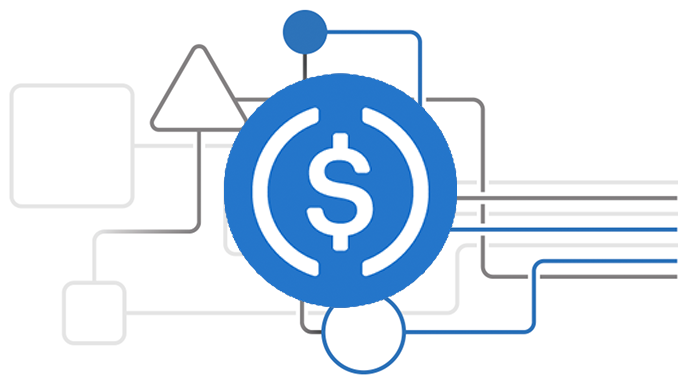
The second most important stablecoin by market capitalization, USD Coin (USDC), temporarily traded below 0.90 US dollars over the weekend. Publisher Circle assures that stability will return today, Monday.
In the US, the official closure of Silicon Valley Bank (SVB) is causing considerable nervousness in the financial markets and pessimists already fear a new financial crisis. The financial holes at SVB also have a direct impact on the crypto industry, because part of the reserves for hedging the stablecoin USD Coin (USDC) are stored at that very bank. Thus, over the weekend, the situation arose that the second most important global stablecoin USDC was quoted on the open market significantly below the targeted level of 1 US dollar and at times fell to 0.877 US dollars. Crypto exchanges Coinbase and Binance temporarily restricted the use and trading for USD Coin. This Monday morning, however, the situation seems to have calmed down after the US crypto firm Circle announced how it plans to keep the stablecoin it is responsible for, USDC, out of trouble at Silicon Valley Bank.
Initially, Circle had been forced to admit via blog post that about 8 percent, or $3.3 billion, of its reserves for USDC were at SVB. An attempt to transfer this money to another bank on Thursday had already not been executed. This news led to frantic selling of USD Coin and caused the price to plummet sharply. Subsequently, however, it crystallized that the Silicon Valley bank, under government supervision, will continue its operations on Monday. After that, Circle also got back in touch with an announcement, according to which the questionable deposits at SVB are to be released again on Monday and USDC can be exchanged 1:1 to the US dollar again. Currently, USD Coin is trading at $0.99, a tolerable deviation.
But the distrust in the crypto scene towards stablecoins is likely to remain. In the spring of 2022, the crash of the algorithmic stablecoin TerraUSD resulted in the collapse of the entire Terra (LUNA) ecosystem, causing at least $40 billion in damage. In turn, the stablecoin DUSD (Decentralized USD), designed by Julian Hosp, has been in a permanent crisis since the summer of 2022. Binance USD (BUSD) is a case in point, here the peg to the US dollar holds, but the project is being unwound under pressure from US regulators.
So the onus is largely on USDC and Tether (USDT), the two classic stablecoins have a combined market cap of just over $110 billion and dominate the industry. They have already become accustomed to having their reserves increasingly scrutinized. Their transparency reports can be viewed here for USD Coin and here for Tether.
Conclusion: USD Coin (USDC) copes with bank shock reasonably well
Those who were willing to take risks and bought USDC at the lows of the weekend can now look forward to a good 10 percent return. But apart from that, Circle as the issuer of USD Coin has managed to defuse the market pressure through a quick and transparent communication policy. If necessary, they would also have been prepared to use corporate funds to prop up USDC, they said.
But on the other hand, the voluntary closure of Silvergate Bank in the U.S. last week had already caused shockwaves towards Bitcoin and Co. and it is not guaranteed that Silicon Valley Bank will remain the last financial institution to run into trouble for the time being. However, hardly anyone in the crypto scene believed that it would be banks that would be unable to meet their obligations and thus cause stablecoins to falter.

Leave a Reply